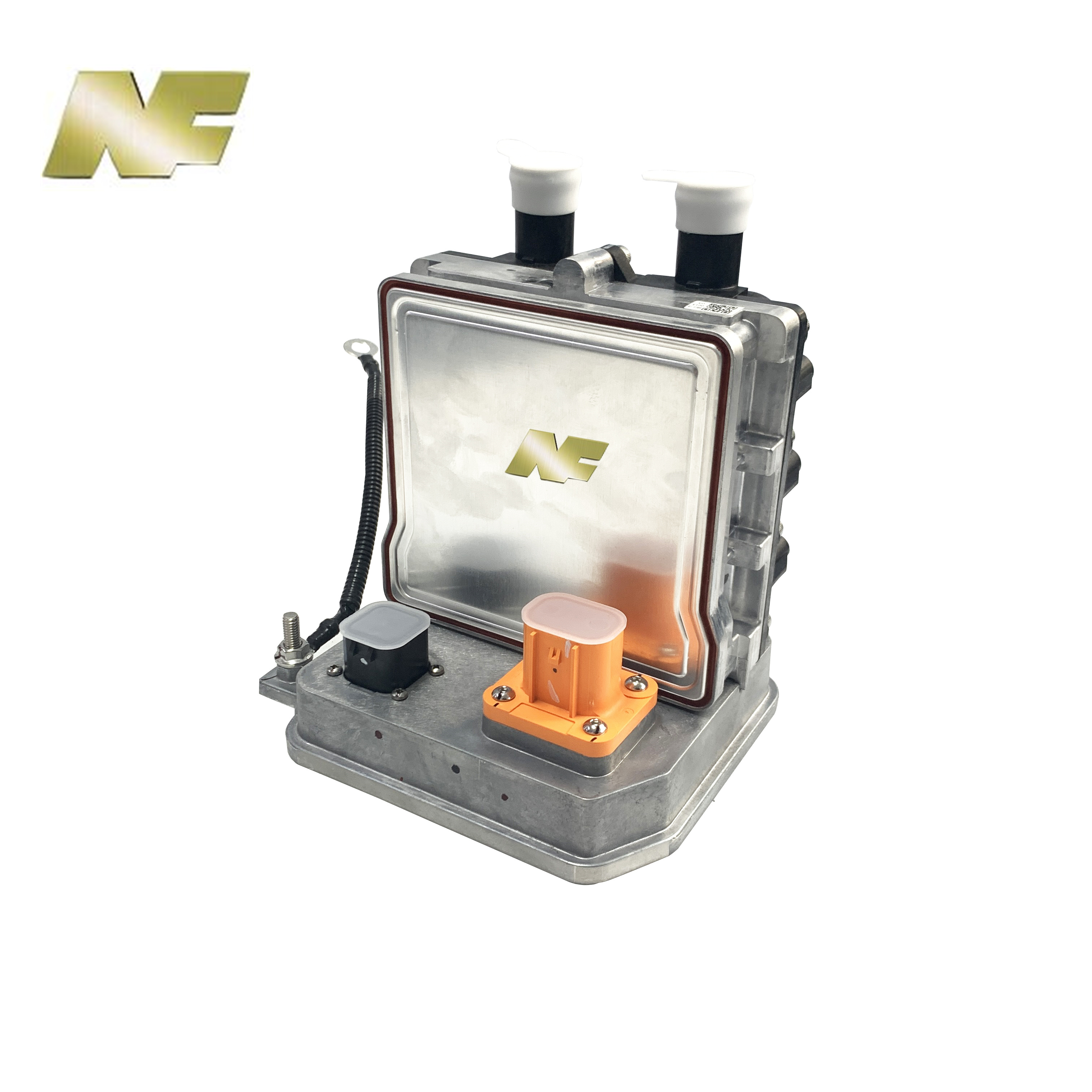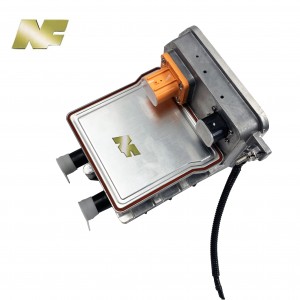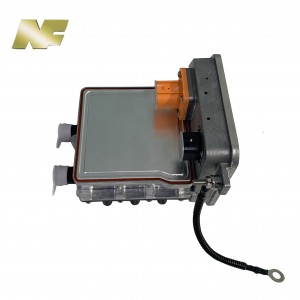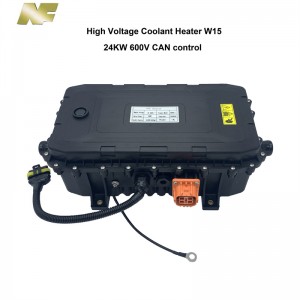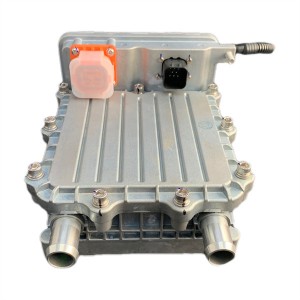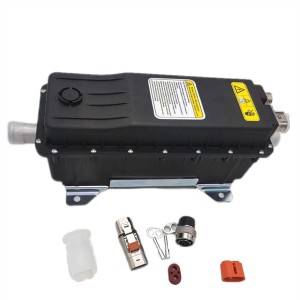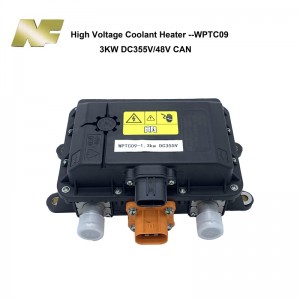NF 7KW Electric Vehicle Celectric vehicle heatersoolant Heater 350V High Voltage Coolant Heater With CAN For EV HVCH
Technical Parameter
| OE NO. | HS-030-151A |
| Product Name | Electric Water Pump |
| Application | New energy hybrid and pure electric vehicles |
| Motor Type | Brushless motor |
| Rated power | 30W/50W/80W |
| Protection level | IP68 |
| Ambient Temperature | -40℃~+100℃ |
| Medium Temp | ≤90℃ |
| Rated Voltage | 12V |
| Noise | ≤50dB |
| Service life | ≥15000h |
| Waterproofing Grade | IP67 |
| Voltage Range | DC9V~DC16V |
Product Detail
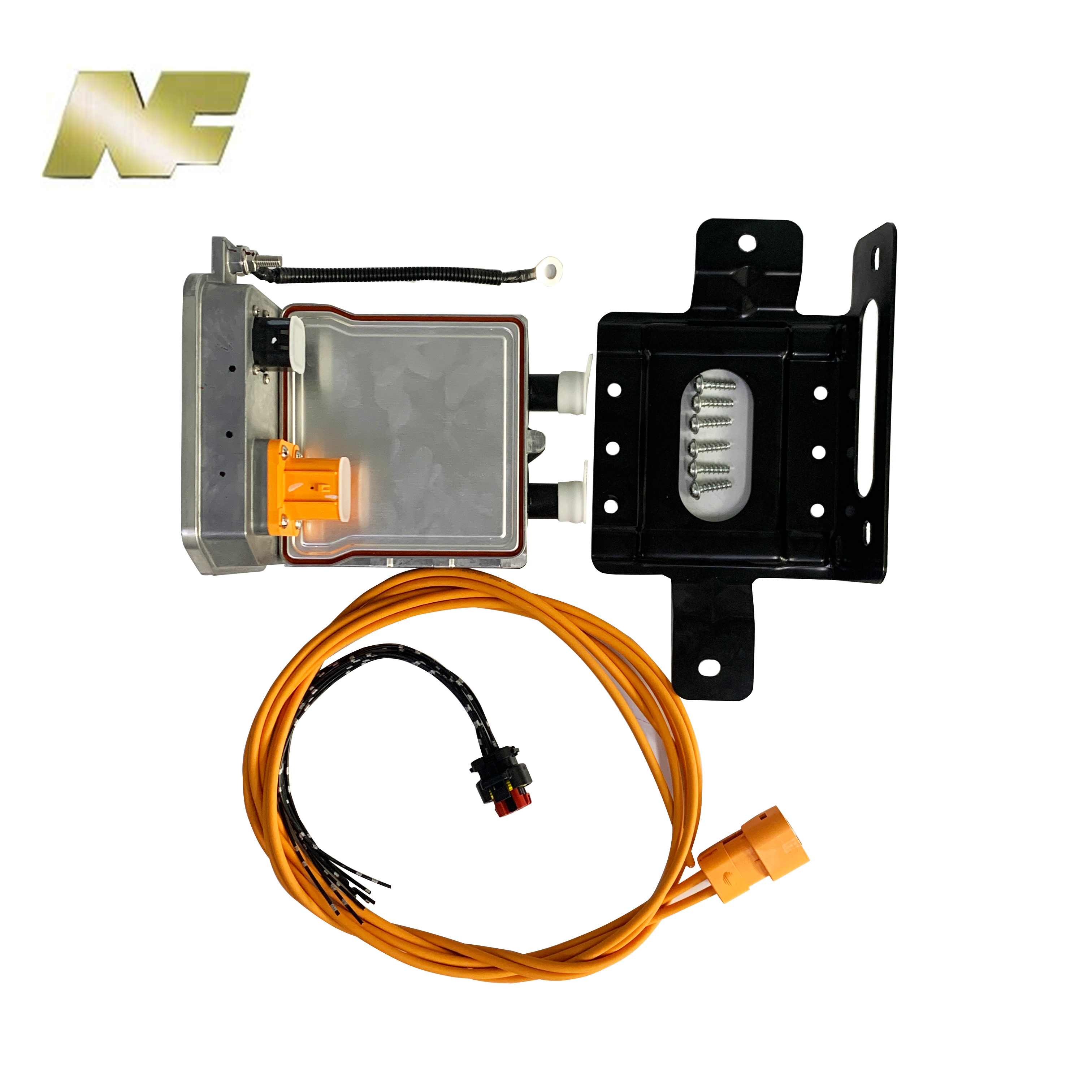
Description
As the world increasingly turns to electric vehicles (EVs) as a sustainable transportation solution, manufacturers and engineers are constantly exploring innovations to optimize EV performance and efficiency. In this exploration, a key aspect that often requires attention is the cooling system, specifically the coolant used to maintain optimal operating temperatures. In this blog, we explore the importance of coolants for electric vehicles and introduce a breakthrough solution - high-voltage PTC heaters.
Understand the importance of coolant for electric vehicles:
Coolants play a vital role in regulating the temperature of electric vehicles as they effectively dissipate the heat generated by vehicle components and maintain an ideal operating temperature range. Overheating can severely impact electric vehicle performance, battery life, and even vehicle safety. Therefore, ensuring an effective cooling system is critical to increasing the longevity, reliability and efficiency of your vehicle.
Challenges of cooling electric vehicles:
Cooling electric vehicles presents unique challenges compared to traditional internal combustion engine (ICE) vehicles. The heat produced by the electric motor is different, and the absence of an engine eliminates the cooling effect produced by a traditional radiator. Additionally, the high energy density of EV batteries further requires more efficient cooling methods.
Traditional methods and the rise of electric vehicle coolant:
Traditionally, air cooling and liquid cooling have been used to regulate the temperature of electric vehicle components, including batteries and power electronics. Air cooling utilizes fans or vents to remove heat, while liquid cooling typically involves circulating coolant through a complex network of ducts. However, these approaches are not always sufficient to meet the cooling needs of next-generation electric vehicles.
Launch of revolutionary solution High Voltage PTC Heater:
To address the unique cooling challenges faced by electric vehicles, innovative technology has emerged in the form of high-voltage positive temperature coefficient (HV PTC) heaters. These heaters combine heating and cooling functions, making them a versatile and efficient solution for maintaining optimal temperatures inside electric vehicles.
Advantages of high-voltage PTC heaters:
1. Improved efficiency: HV PTC heaters are highly efficient and provide instant heat without the need for warm-up time. This allows for more efficient use of energy, improving the overall efficiency of the vehicle and extending range.
2. Wide operating range: HV PTC heaters are designed to work efficiently over a wide temperature range, ensuring optimal performance even in extreme weather conditions. This versatility increases the reliability and durability of electric vehicles, making them suitable for all climates.
3. Precise Temperature Control: HV PTC heaters provide precise temperature control, preventing overheating and overheating of important components. This not only ensures optimal performance but also extends the life of key electric vehicle components such as batteries.
4. Safety: High-voltage PTC heaters are intrinsically safe due to their unique resistance characteristics. They eliminate the risk of sparks and are ideal for electric vehicles where safety is critical.
in conclusion:
As global demand for electric vehicles continues to surge, the need for improved cooling technology is becoming increasingly apparent. HV PTC heaters represent a major leap forward in the development of efficient cooling systems for electric vehicles. Their efficiency, wide operating range, precise temperature control and safety features make them ideal for the next generation of electric vehicles. With this innovation, the future of electric vehicle coolants is bright, ensuring optimal performance, extended service life, and more sustainable transportation solutions for everyone.
CE certificate
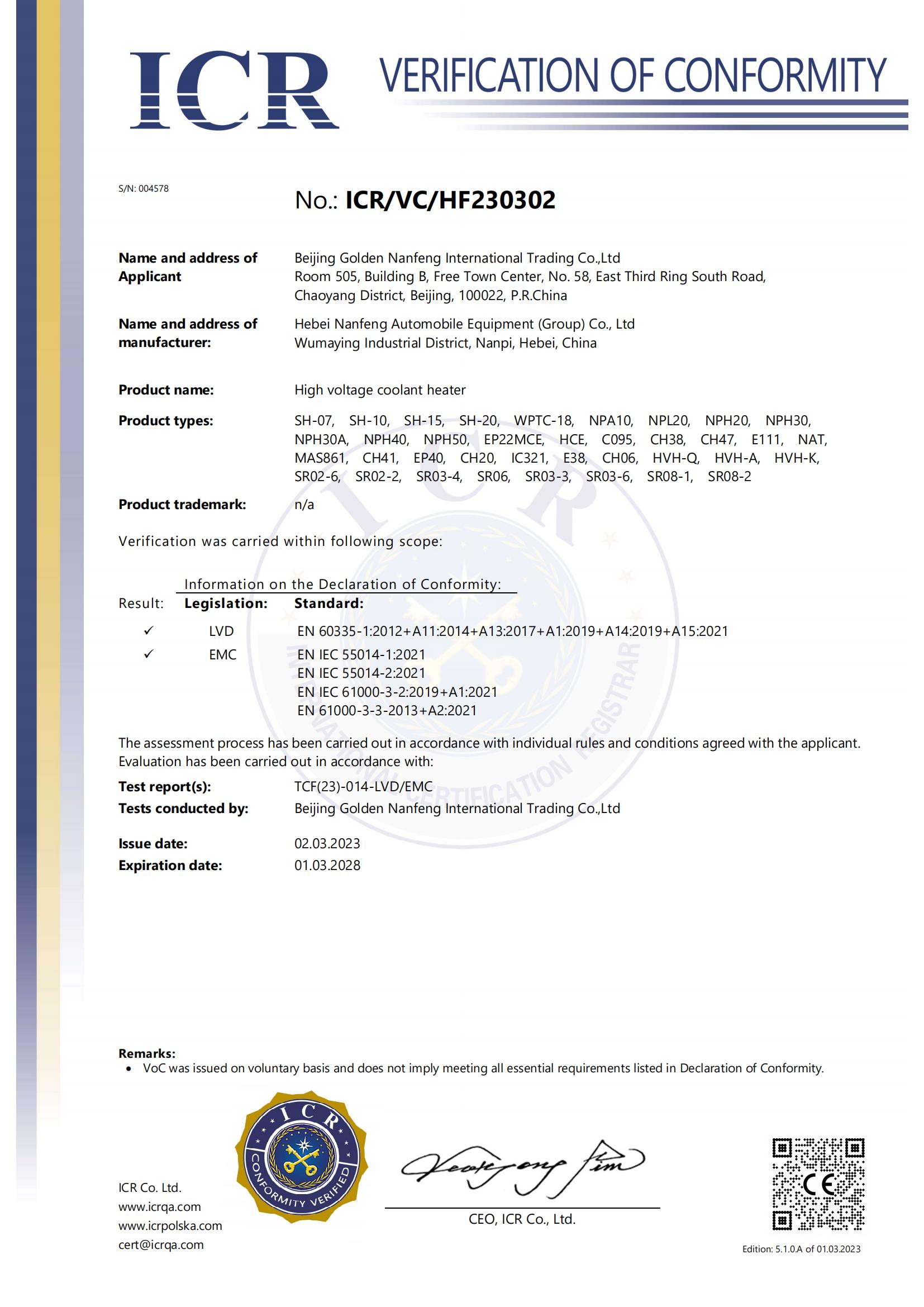
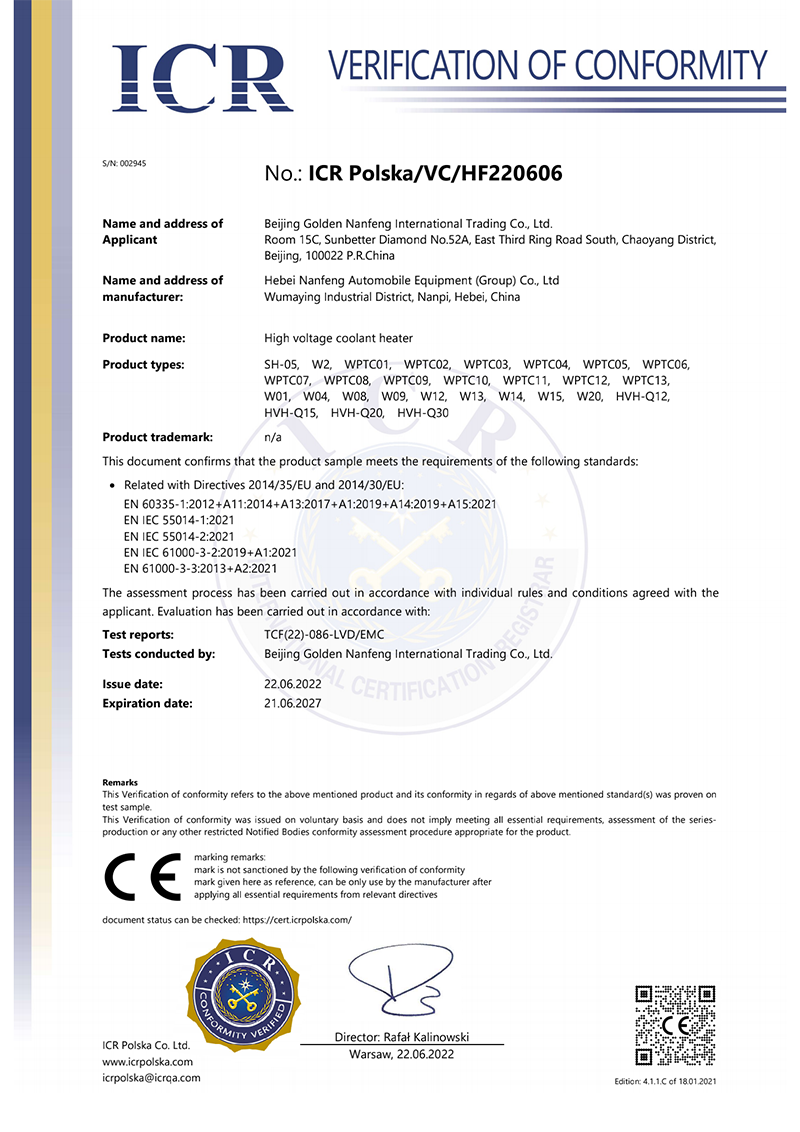
Our Company
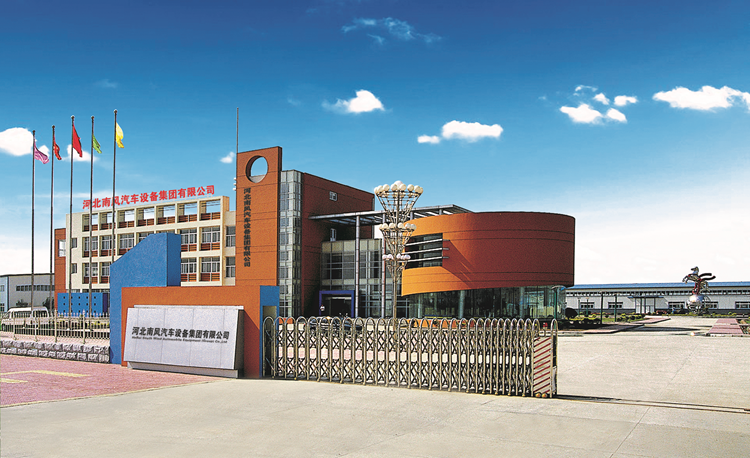

Hebei Nanfeng Automobile Equipment (Group) Co., Ltd is a group company with 5 factories, that specially produce parking heaters, heater parts, air conditioner and electric vehicle parts for more than 30 years. We are the leading auto parts manufacturers in China.
Our factory's production units are equipped with high tech machineries, strict quality,control testing devices and a team of professional technicians and engineers endorsing the quality and authenticity of our products.
In 2006, our company has passed ISO/TS16949:2002 quality management system certification. We also bagged the CE certificate and Emark certificate making us among the only few companies in the world acquiring such high level certifications. Currently being the largest stakeholders in China, we hold a domestic market share of 40% and then we export them around the globe particularly in Asia, Europe and Americas.
Meeting the standards and demands of our customers have always been our top priority. It always encourages our experts to continuously brain storm, innovate, design and manufacture new products, impeccably suitable for the Chinese market and our customers from every nook of the world.
Application


FAQ
1. What is a HV PTC heater?
HV PTC heater, also known as high-voltage positive temperature coefficient heater, is an electric heater that uses a positive temperature coefficient of resistance to generate heat. It is commonly used in a variety of applications such as automotive heating systems, water heaters, and household appliances.
2. How does a HV PTC heater work?
High voltage PTC heaters work by utilizing ceramic elements with a positive temperature coefficient of resistance. When an electric current passes through a ceramic component, the ceramic component heats up due to its resistance. As the temperature increases, the resistance of the ceramic element increases, thus regulating the heat output. This self-regulating feature makes HV PTC heaters energy efficient and safe to use.
3. What are the advantages of using HV PTC heater?
Some advantages of using HV PTC heaters include:
- Energy efficiency: HV PTC heaters adjust power output based on ambient temperature, thus saving energy.
- SAFE: The self-regulating feature prevents overheating, making them safe to use without fire hazard.
- Durability: HV PTC heaters have a longer service life than conventional heaters because they are not subject to thermal stress during operation.
- Fast heating response: The high-pressure PTC heater can quickly reach the required temperature, providing instant warmth.
4. Where can HV PTC heaters be used?
HV PTC heaters have a wide range of applications including:
- Automotive industry: for cabin heaters, defrost systems, seat heaters and electric vehicle heating.
- Household appliances: HV PTC heaters can be used in hair dryers, electric heaters, coffee machines and dishwashers.
- Industrial equipment: They are used in heating processes in industrial ovens, dryers and HVAC systems.
- Heating systems: HV PTC heaters are used in space heaters, water heaters and floor heating systems.
5. Is HV PTC heater safe to use?
Yes, HV PTC heaters are generally considered safe to use. The self-regulating feature prevents them from overheating, thus reducing the risk of fire. Additionally, they are designed to operate at high voltages, ensuring proper insulation and safety measures. However, it is always important to follow the manufacturer's instructions and safe usage guidelines.
6. Can HV PTC heaters save energy?
Yes, HV PTC heaters are known for their energy efficiency. When the ambient temperature approaches the desired level, the resistance of the ceramic element increases, automatically reducing power output. This means that once the target temperature is reached, the HV PTC heater consumes less energy, thus saving energy compared to conventional heaters.
7. How do HV PTC heaters compare to other types of heaters?
HV PTC heaters offer several advantages over traditional heating systems. They are more energy efficient, last longer, and provide faster heating response. Additionally, HV PTC heaters do not require complex control systems or thermostats because they self-regulate heat output. However, the choice of heater type depends on specific requirements, application and cost considerations.
8. Can HV PTC heaters be used in humid environments?
Yes, HV PTC heaters can be used in humid environments. These heaters are designed with proper insulation and moisture protection, making them suitable for a variety of applications, including high humidity environments. However, the IP (Ingress Protection) rating of the heater for its specific use must be considered to ensure appropriate safety and longevity.
9. Are HV PTC heaters maintenance-free?
Generally speaking, HV PTC heaters are considered maintenance-free. They have no moving parts and are designed to operate reliably for long periods of time. However, it is recommended to regularly clean the surface of the heater and inspect it for any signs of damage or wear. Following the manufacturer's maintenance guidelines will help ensure optimal performance and longevity.
10. Can HV PTC heaters be used for both heating and cooling purposes?
No, HV PTC heaters are mainly used for heating purposes. When electric current passes through ceramic components, they generate heat. The positive temperature coefficient of resistance allows them to self-regulate heat output based on ambient temperature. However, for cooling purposes, alternative technologies such as fans, refrigeration systems or heat pumps are often used.

